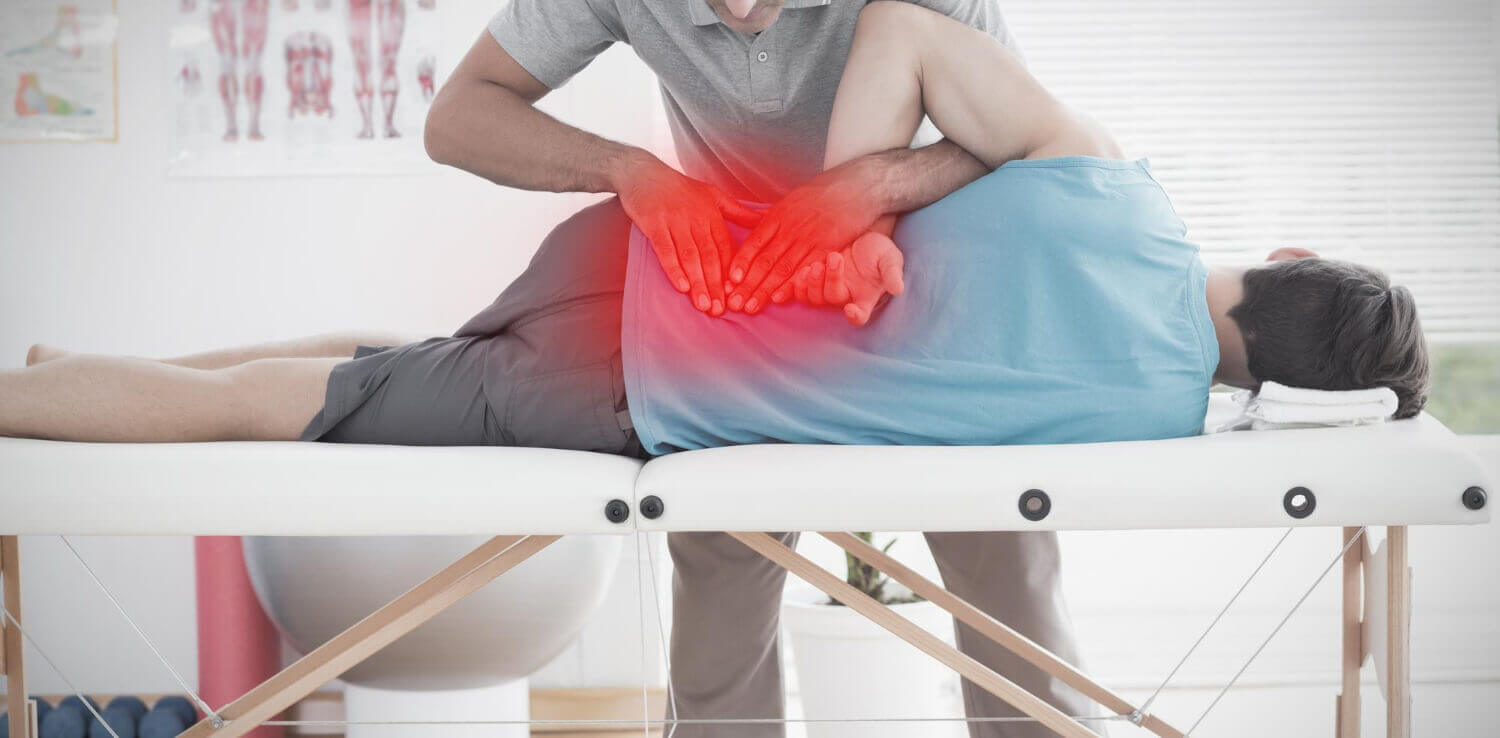Are you currently experiencing sacroiliac joint pain? We understand how uncomfortable it can be, but rest assured, you don’t have to endure it any longer. If you’re in search of effective treatment in Clifton, NJ, look no further. Our dedicated team at (973)-798-1787 is here to provide you with the relief you deserve, helping you get back to living your life to the fullest.
With our expertise and specialization in sacroiliac joint pain, our experts are committed to delivering personalized and comprehensive treatment tailored specifically to your needs. We pride ourselves on utilizing state-of-the-art facilities and advanced techniques that allow us to address the root cause of your pain. Through our holistic approach, we can develop a customized treatment plan that targets your condition.
Imagine the freedom of movement without any discomfort or restriction. Our proven methods aim to not only reduce inflammation but also restore function, alleviating your sacroiliac joint pain and enabling you to enjoy an active lifestyle once again. We prioritize your well-being and strive to help you regain your quality of life.
Take the first step towards a pain-free life by calling (973)-798-1787 today. Don’t let sacroiliac joint pain hold you back any longer – contact us now to schedule your consultation and embark on your journey towards lasting relief. Our compassionate team is ready to support you every step of the way.
Understanding the Sacroiliac Joint
The inertia of everyday movement, and the pivot of a bend or twist, all stems from the sacroiliac joint. Comprehending the anatomy and function of this pivotal joint is the first step in addressing and treating the pain it may manifest.
The SI joint is formed where the iliac bones and sacrum merge in the pelvis. Characterized by its irregular surface, the joint is more about stability than mobility, firmly clasping together the pelvic girdle and the base of the spine. Its strength contributes to our ability to withstand pressure from activities such as walking, running, or lifting, while also acting as a shock absorber.
Causes and Symptoms of Sacroiliac Joint Pain
Pain in the SI joint can be triggered by a variety of causes, including injury, age-related wear and tear, and pregnancy. The symptoms are often confused with other types of back pain, leading to delayed or incorrect diagnoses.
Chronic pain sufferers may experience symptoms such as:
- Dull or sharp pain in the lower back, buttocks, or the back of the thighs
- Numbness or tingling
- Reduced range of motion in the hips or lower back
- Worsening pain during movement or transitions from sitting to standing
Diagnosis and Assessment
Accurate diagnosis plays a pivotal role in formulating an effective treatment plan for SI joint pain. Given that the symptoms can often mimic those of other spinal issues, physicians rely on a meticulous process of elimination. This involves a combination of thorough physical examinations, comprehensive imaging studies such as X-rays and MRI scans, as well as the injection of local anesthetics into the joint to gauge pain reduction.
Furthermore, this multifaceted diagnostic process underscores the significance of a comprehensive assessment. It encompasses not only the precise location of the pain but also takes into consideration the patient’s lifestyle, occupation, and activity level. By delving into these additional details, healthcare providers gain a more holistic understanding of the patient’s condition, which in turn aids in developing a well-rounded and tailored treatment approach.
Non-Surgical Treatment Options
Non-surgical treatments are often the first course of action for SI joint pain, focusing on relief through therapeutic and minimally invasive methods.
Medications for Pain Management
- Nonsteroidal anti-inflammatory drugs (NSAIDs)
- Muscle relaxants for temporary relief
- Administering corticosteroid injections to alleviate inflammation and alleviate pain.
- External pain relievers like creams, gels, or patches.
Alternative Therapies
Several alternative therapies can complement traditional treatments. For example, acupuncture, a practice that involves the insertion of fine needles into specific points on the body, focuses on rebalancing the body’s energy and promoting overall well-being. Another option is the use of a TENS unit, which stands for Transcutaneous Electrical Nerve Stimulation. This device delivers safe and low-voltage electric pulses to the body, effectively interfering with pain messages sent to the brain. By exploring these additional treatment options, individuals can potentially enhance their overall healing and wellness journey.
Lifestyle Modifications for Pain Management
Pain management is not solely the domain of medical treatments; lifestyle adjustments can also play a significant role. These modifications seek to reduce stress on the SI joint and maintain a healthy lifestyle overall, promoting healing and well-being.
The Importance of a Healthy Lifestyle
Leading a well-rounded, healthy lifestyle is paramount for improving the body’s function and resilience. It encompasses various aspects, such as maintaining a healthy weight through regular exercise and mindful eating habits. Staying adequately hydrated is also crucial, as it supports optimal bodily functions and promotes overall well-being.
Additionally, ensuring good nutrition by incorporating a balanced diet rich in essential nutrients is key to nourishing the body and enhancing its ability to thrive. By prioritizing these elements, individuals can unlock the potential for a vibrant and resilient life.
Diet and Nutrition Tips
Certain foods, such as processed and fried foods, sugary drinks, and refined grains, can contribute to inflammation, which in turn can exacerbate pain in the SI joint. On the other hand, following an anti-inflammatory diet that includes a wide variety of colorful fruits and vegetables, whole grains, lean proteins, and healthy fats like omega-3 fatty acids can help reduce discomfort and promote overall joint health. By making conscious choices in our diet, we can take proactive steps toward managing pain and optimizing our well-being.
Exercise and Stretching Recommendations
Regular exercise and stretching play a vital role in effective pain management. By engaging in regular physical activity, you can not only strengthen the supportive musculature but also improve flexibility, which can help alleviate discomfort and prevent future pain-related issues. Incorporating a well-rounded exercise routine that includes both cardiovascular exercises and targeted stretching can contribute to a healthier and more resilient body, enhancing overall well-being and quality of life.
Prevention and Self-Care
Prevention is the ultimate goal for many chronic pain sufferers. By understanding the causes of SI joint pain, you can adopt practices that minimize risk and foster healthier habits, ultimately reducing the likelihood of experiencing pain.
Tips for Preventing Sacroiliac Joint Pain
Preventative measures include:
- Maintaining proper posture
- Lifting heavy objects correctly
- Using supportive footwear
- Implementing ergonomically sound workspaces
Self-Care Techniques for Pain Management
Daily, simple routines like applying heat or cold packs, engaging in regular low-impact exercise, and benefiting from good sleep hygiene can go a long way in self-medicating SI joint pain.
Conclusion
In conclusion, dealing with sacroiliac joint pain can have a major impact on your quality of life. But here in Clifton, NJ, we’re to help you find relief. Our clinic offers comprehensive treatment options that are tailored to your needs. We combine advanced diagnostic techniques with personalized treatment plans to address the root cause of your pain and provide long-term relief. Our team of experienced medical professionals is dedicated to helping you regain mobility and live your best, pain-free life. If you’re suffering from sacroiliac joint pain in Clifton, NJ, give us a call at (973)-798-1787 to schedule a consultation. Let’s take the first step towards a future without pain together!
FAQs about Sacroiliac Joint Pain Treatment
What causes sacroiliac joint pain?
Sacroiliac joint pain can be caused by various factors, including inflammation, injury, and degeneration. It is also commonly associated with conditions like arthritis and pregnancy.
How is sacroiliac joint pain treated?
Treatment options for sacroiliac joint pain may include medication, physical therapy, injections, and in severe cases, surgery. Working with a medical professional can help determine the best course of action for your specific condition.
Can sacroiliac joint pain be prevented?
While some risk factors may be out of our control, there are steps we can take to prevent or minimize the likelihood of experiencing sacroiliac joint pain. These include maintaining good posture, using proper lifting techniques, and incorporating regular exercise and stretching into our routines.
How long does it take to recover from sacroiliac joint pain?
The duration of recovery may differ based on the extent of the condition and individual variables. With proper treatment and lifestyle adjustments, many individuals experience significant improvement in their symptoms within a few weeks.

